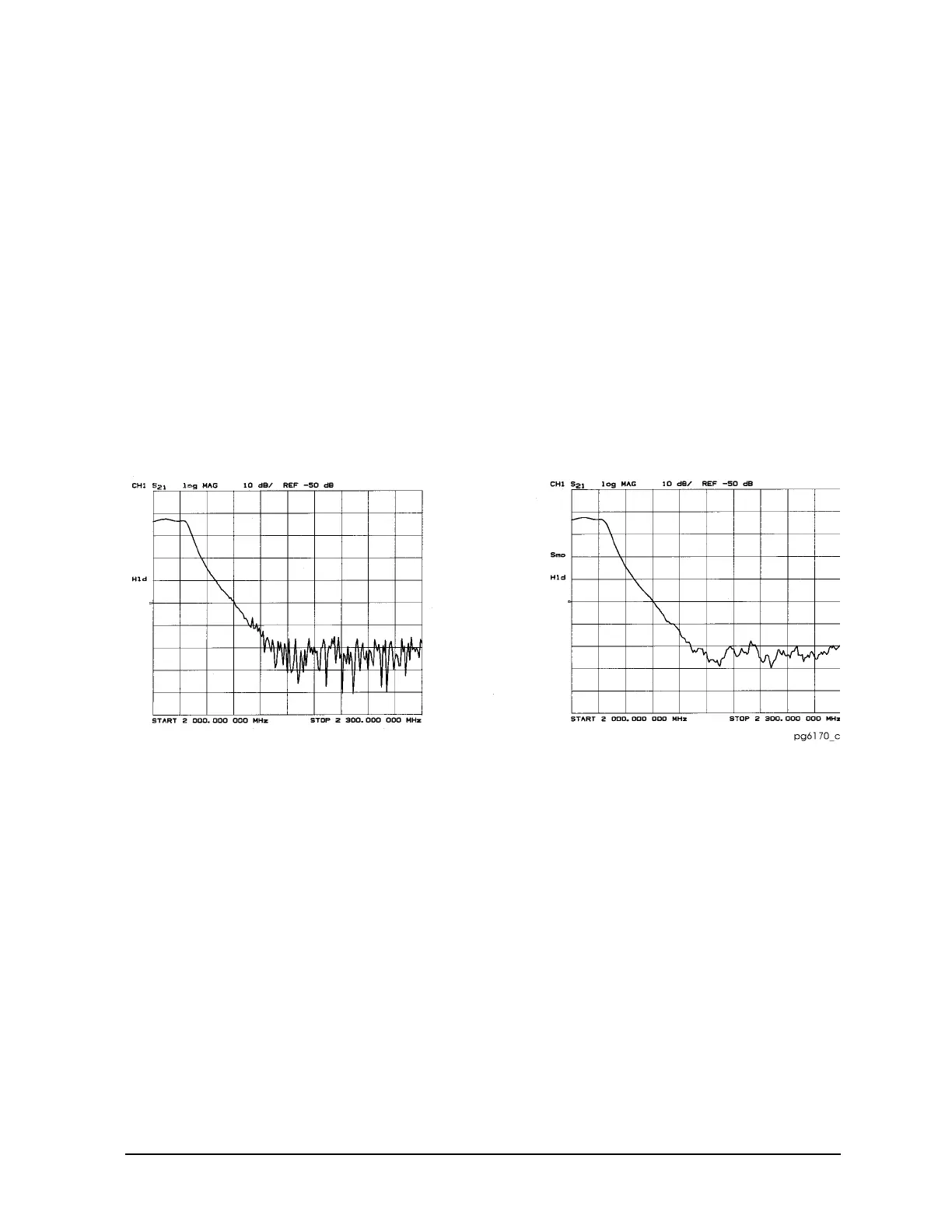7- 37
Operating Concepts
Noise Reduction Techniques
Smoothing
Smoothing (similar to video filtering) averages the formatted active channel data over a portion of the
displayed trace. Smoothing computes each displayed data point based on one sweep only, using a moving
average of several adjacent data points for the current sweep. The smoothing aperture is a percent of the
swept stimulus span, up to a maximum of 20%.
Rather than lowering the noise floor, smoothing finds the mid-value of the data. Use it to reduce relatively
small peak-to-peak noise values on broadband measured data. Use a sufficiently high number of display
points to avoid misleading results. Do not use smoothing for measurements of high resonance devices or
other devices with wide trace variations, as it will introduce errors into the measurement.
Smoothing is used with Cartesian and polar display formats. It is also the primary way to control the group
delay aperture, given a fixed frequency span. Refer to
“Group Delay Principles” on page 7-32. In polar display
format, large phase shifts over the smoothing aperture will cause shifts in amplitude, since a vector average
is being computed. The effect of smoothing on a log magnitude format trace is illustrated in
Figure 7-19.
Figure 7-19 Effect of Smoothing on a Trace
IF Bandwidth Reduction
IF bandwidth reduction lowers the noise floor by digitally reducing the receiver input bandwidth. It works in
all ratio and non-ratio modes. It has an advantage over averaging as it reliably filters out unwanted
responses such as spurs, odd harmonics, higher frequency spectral noise, and line-related noise.
Sweep-to-sweep averaging, however, is better at filtering out very low frequency noise. A tenfold reduction
in IF bandwidth lowers the measurement noise floor by about 10 dB. Bandwidths less than 300 Hz provide
better harmonic rejection than higher bandwidths.
Another difference between sweep-to-sweep averaging and variable IF bandwidth is the sweep time.
Averaging displays the first complete trace faster but takes several sweeps to reach a fully averaged trace.
IF bandwidth reduction lowers the noise floor in one sweep, but the sweep time may be slower. The
difference in noise floor between a trace measured with a 3000 Hz IF bandwidth and with a 10 Hz IF
bandwidth is illustrated by
Figure 7-20.

